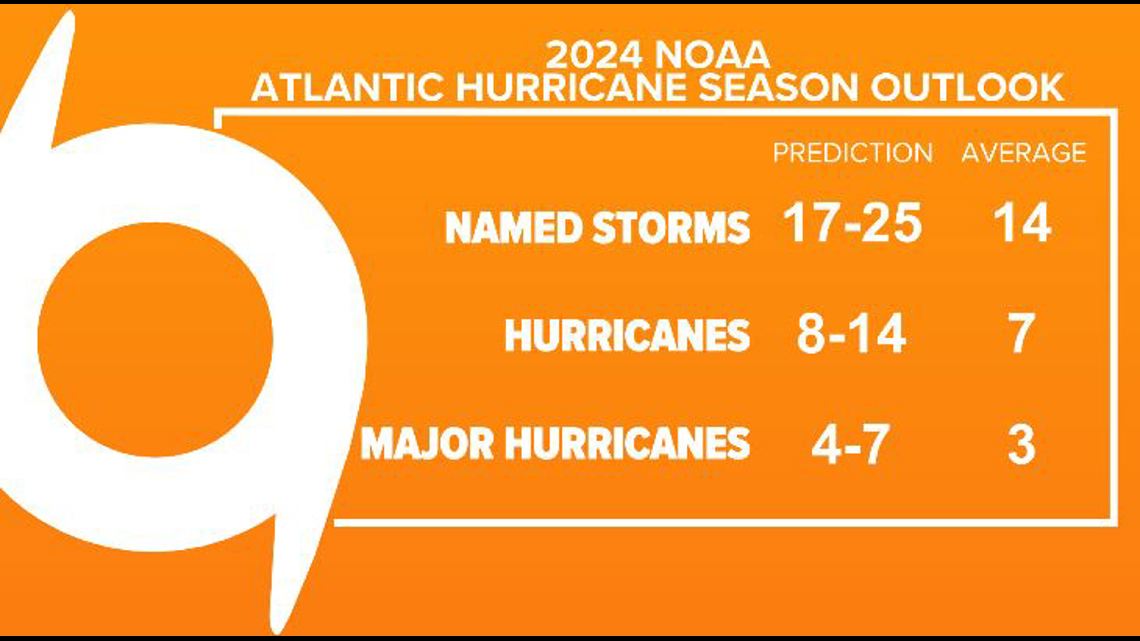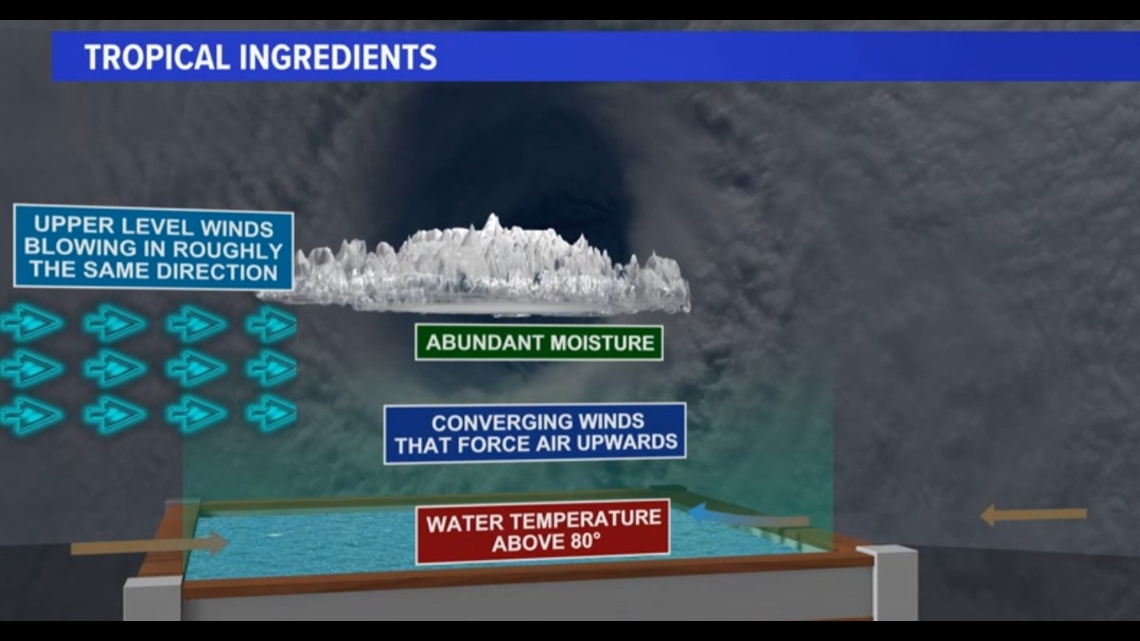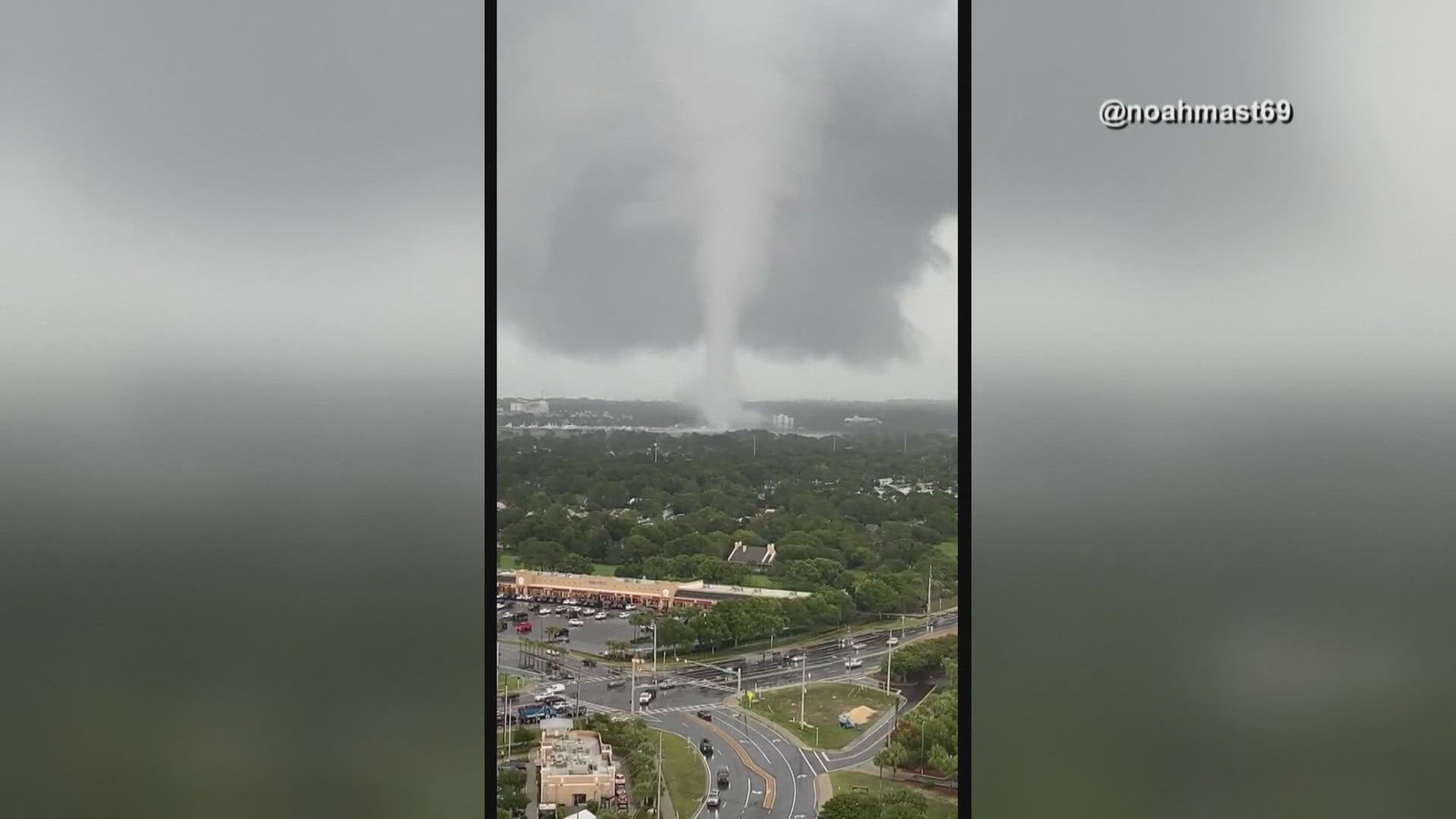JACKSONVILLE, Fla. — The National Hurricane Center issued their 2024 Atlantic hurricane season outlook on Thursday. The forecast expects an above average hurricane season with the numbers being the highest ever they have issued for their pre-season May outlook.
THE NOAA 2024 OUTLOOK
Named Storms: 17-25 (AVERAGE 14)
Hurricanes: 8-14 (AVERAGE 7 )
Major Hurricanes: 4-7 (AVERAGE 3)
The justification for this above average seasonal outlook includes the formation of the La Nina which is conducive for tropical systems to form due to warming sea surface temperatures and reduced vertical wind shear in the main formation region in the tropics. Furthermore, above average, record-breaking sea surface temperatures are already being seen across the Atlantic in May. This trend is expected to continue through the summer and thus, adding fuel for tropical system formation.
"Sea surface temperatures are a major factor in the rapid intensification of a tropical cyclone to major hurricane status," Spinrad the NOAA Administrator who made the Hurricane outlook announcement Thursday explained. "Remember, it only takes one storm to devastate a community."
The most active hurricane season on record was the 2020 season. That year 30 named storms formed with 14 hurricanes tying the 2005 Hurricane season. There were also 7 major hurricanes in 2020. (Category 3 or higher).


What are some of the factors needed to create a strong tropical system?
- Temperature Requirement: Sea surface temperatures must be at least 26.5°C (about 80°F) to a depth of about 50 meters (150 feet). Warm water is crucial as it provides the energy needed for the hurricane to develop and intensify.
- Rising Warm Air: For a hurricane to form, there must be an unstable atmosphere where warm, moist air near the surface rises and cools, leading to condensation and cloud formation. This releases latent heat, which further warms the surrounding air and causes it to rise, perpetuating the cycle.
- Moisture Supply: High humidity in the mid-troposphere (about 5,000 to 20,000 feet above the surface) is essential. It reduces the rate at which rising air cools, supporting cloud formation and intensification.
- Sustained Convection: High levels of moisture ensure that the convection (rising and cooling of air) needed for thunderstorm and hurricane development is sustained.
- Rotation: The Coriolis effect, caused by the Earth's rotation, is necessary for the development of the cyclonic rotation (spin) of the system. This effect is weak near the equator, which is why hurricanes do not typically form within about 5 degrees of the equator.
- Definition: Wind shear refers to the change in wind speed and direction with height. Low wind shear is crucial because high wind shear can disrupt the organization of a developing storm by tilting and displacing the rising air and associated thunderstorms.
- Vertical Alignment: Low wind shear allows the storm to maintain its vertical alignment, which is essential for its growth and intensification.
- Seed Disturbance: Hurricanes typically develop from pre-existing weather disturbances, such as tropical waves, which are areas of low pressure and convection moving through the tropics.
- Consolidation: These disturbances serve as the initial focus for the organization of thunderstorms and the eventual development of a cyclonic system.
- Ventilation: Efficient outflow at the upper levels of the atmosphere is important. This outflow allows the rising air in the hurricane to be vented away, making room for more air to rise from below. This often comes in the form of anti-cyclonic rotation aloft that helps maintain the low-pressure system at the surface and supports continued intensification.



